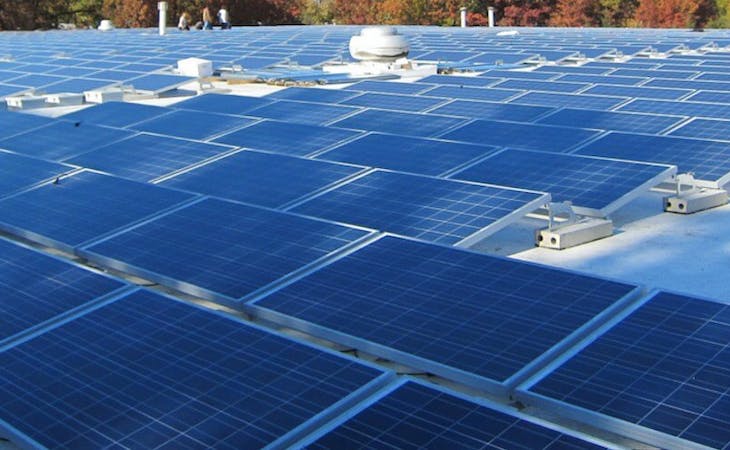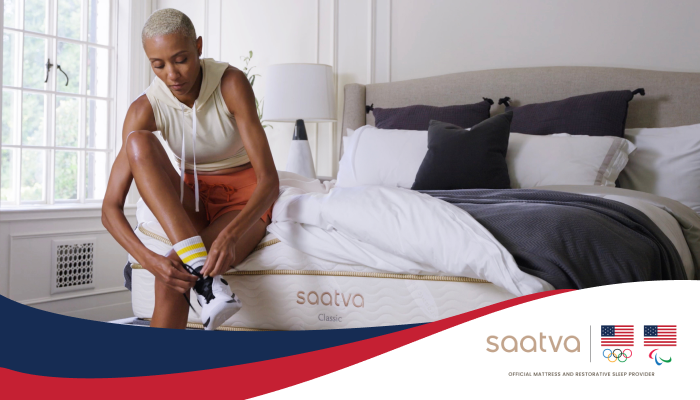Helping others live a healthier life is at the forefront of the Saatva Company’s mission. Our definition of a healthy life reaches far beyond our commitment to improving the physical health of our customers—it also includes our efforts to improve the environment.
Saatva’s commitment to the environment
We do this by carefully considering every detail. From the fine, eco-friendly cotton that covers each mattress to the core of our e-commerce business model, we aim to reduce our carbon footprint as much as possible. Our business model is not only healthier for the environment, but it also eliminates all of the costs that drive up prices in retail stores, allowing Saatva to sell our eco-friendly mattresses at a lower price point.
One way that we’re able to scale this practice is by partnering with like-minded companies and factories as we continue to grow.
Take a look at Saatva’s eco-friendly factory
Bedding Industries of America (BIA), one of The Saatva Company’s 17 factory partners, embodies this green mindset in every way. We learn a lot in working with them and value their commitment to living a greener, healthier life. It’s because of valued partners like BIA that you can rest assured that your Saatva sleep surface is eco-friendly to its literal core. What makes BIA so unique?
Solar powered factory
Bedding Industries of America has 300 kW solar panels on the top of their factory, which not only provides power for their operations but exceeds their daily demand for office and manufacturing needs. This allows them to provide the excess generated power back to the electrical grid. On April 16, 2018 for example, BIA was powered entirely by solar energy, selling back a surplus of 95kWh.
The solar array can also lower the amount of sunlight that hits the roof during the summer months, altering the temperature and keeping the factory cooler. This is beneficial not only for the employees, who get a reprieve from the relentless summer sun but also for the factory equipment.
Reduced carbon footprint
A carbon footprint is the total amount of greenhouse gases produced directly and indirectly from our human activities. For the current 365-day cycle, Bedding Industries of America produced 359,000 kWh of energy via solar power, reducing their carbon footprint by around 60%.
What does that mean? If all of the factory’s electrical energy came from the grid, like traditional homes, businesses, and factories, their carbon footprint would be much higher. Carbon footprint may seem like an abstract concept, but it has real-world consequences.
“The reduction in carbon footprint impacts the forest by reducing the amount of new trees that would have to be planted to sequester the metric tons of Co2 gas produced each year.” (Mike Campbell, VP of Operational Systems BIA)
Consider it in terms of trees. Without renewable energy, BIA would have to plant 60 acres of trees (about the size of 45 football fields), but with their commitment to renewable resources, they require only 23.5 acres (roughly 18 football fields). By using and investing in renewable energy, BIA is able to offset its energy consumption and reduce its carbon footprint.
Efficient recycling program
BIA’s recycling commitment begins with following federal and state recycling regulations. They also recycle scrap from daily production like foam, textile clippings, wood (pallets and unusable lumber), and plastics. According to Mike Campbell, VIP of Operational Systems at BIA, the
factory has “aggressively increased” its recycling efforts in the last two years. In this 365-day cycle alone, they recycled over 3,000 tons (roughly the weight of 2,250 cars), that would otherwise have ended up in the landfill.
Recyclers use these materials to make new products like padding for carpeting, pillow fill, and new plastics.
Fuel-efficient vehicles
Your car can have a lot of impact on the environment. According to American Forests, four tons of new greenhouse gases are floating around the atmosphere each year for every car on the road. To combat this, BIA invested in new tractors and trailers for improved fuel efficiency.
What you can do to reduce your carbon footprint
Like BIA, we should all take active steps to reduce our individual carbon footprints. Start small. Big, radical changes aren’t easy to make (or
sustain). Below you’ll find a few simple things you can slowly incorporate into your daily routine to live a healthier, greener life.
- When possible, walk or ride your bike in lieu of driving.
- Make energy efficiency top-of-mind when purchasing home appliances.
- Don’t set your thermostat too high or too low and turn it off when you’re not home.
- Eat locally-produced, organic food.
- Purchase organic, eco-friendly home goods instead of products that off-gas and are less environmentally conscious.
- Consider solar panels.
- Recycle when you can.
Learn more about how Saatva supports the environment.







